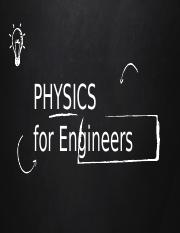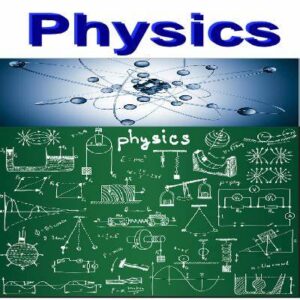Here you can download the free lecture Notes of Engineering Physics Pdf Notes materials with multiple file links to download. The Engineering Physics Notes Pdf book starts with the topics covering Ionic Bond, Covalent Bond, Metallic Bond, Basic Principles, Maxwell- Boltz man, Electron in a periodic Potential, Fermi Level in Intrinsic and Extrinsic Semiconductors, Electric Susceptibility, Applications of Superconductors, Quantum Confinement, Etc.

Engineering Physics Notes Pdf 1st Year
Note : According to the JNTUH – R13 Syllabus these Engineering Physics Notes 8 units are compressed into 5 units.
Complete Notes
Link: Complete Notes
Unit 1
Link: Unit 1
Unit 2
Link: Unit 2
Unit 3
Link: Unit 3
Unit 4
Link: Unit 4
Unit 5
Link: Unit 5
Unit 6
Link: Unit 6
Unit 7
Link: Unit 7
Unit 8
Link: Unit 8
LIST OF CONTENTS
Engineering Physics Imp Questions :- Click Here for Imp Questions
Follow us on FB – Smartzworld
Engineering Physics Notes Pdf | Free Lecture Notes Download 2025-SW

Are you a B.Tech student searching for Engineering Physics Notes to help you through your 1st year of studies? You’ve come to the right place! This comprehensive Engineering Physics Notes Pdf includes all the essential topics, ranging from bonding in solids to semiconductor physics, and from quantum mechanics to nanotechnology.
According to the JNTUH – R13 syllabus, the original eight units have been compressed into five units to ensure a more streamlined and efficient learning experience. Download the lecture notes for each unit or the complete set using the links provided below.
Complete Engineering Physics Notes PDF
Link: Complete Notes
Unit 1: Bonding in Solids and Crystallography
This unit covers:
- Bonding in Solids:
- Ionic, Covalent, Metallic, Hydrogen, and Van der Waals bonds
- Cohesive energy calculation
- Crystallography and Crystal Structures:
- Space lattice, unit cell, lattice parameters
- Bravais lattices, Miller indices, crystal planes
- Packing factors of SC, BCC, FCC, and diamond structures
- Structures of NaCl, ZnS, and CsCl
Link: Unit 1
Unit 2: X-ray Diffraction and Crystal Defects
Key topics include:
- X-ray Diffraction:
- Basic principles, Bragg’s law, Laue method, powder method
- Applications of X-ray diffraction
- Crystal Defects:
- Point defects: vacancies, substitutional and interstitial defects
- Frenkel and Schottky defects
- Line defects (edge and screw dislocations), Burgers vector
Link: Unit 2
Unit 3: Statistical Mechanics and Quantum Mechanics
This unit delves into:
- Statistical Mechanics:
- Maxwell-Boltzmann, Bose-Einstein, and Fermi-Dirac statistics
- Photon gas, Planck’s law of black body radiation
- Fermi energy, electron gas, density of states
- Quantum Mechanics:
- Wave-particle duality, de Broglie hypothesis
- Heisenberg’s uncertainty principle, Schrödinger’s wave equation
- Particle in a one-dimensional potential box
Link: Unit 3
Unit 4: Band Theory of Solids and Semiconductor Physics
Topics covered:
- Band Theory of Solids:
- Bloch theorem, Kronig-Penney model
- Energy band formation in solids
- Classification of materials: conductors, semiconductors, insulators
- Semiconductor Physics:
- Intrinsic and extrinsic semiconductors, Fermi level, carrier concentration
- Hall effect, direct and indirect bandgap semiconductors
Link: Unit 4
Unit 5: Semiconductor Devices and Magnetic Properties
In this unit, you’ll learn about:
- Semiconductor Devices:
- PN junction, IV characteristics, LED, LCD, and photodiodes
- Magnetic Properties:
- Permeability, magnetic field induction, Bohr magneton
- Dia, para, and ferromagnetic materials
- Hysteresis curve, soft and hard magnetic materials
- Applications of superconductors
Link: Unit 5
Unit 6: Dielectric Properties and Lasers
Topics include:
- Dielectric Properties:
- Electric dipole, dielectric constant, polarization
- Piezoelectricity, pyro-electricity, and ferroelectricity
- Lasers:
- Spontaneous and stimulated emission, population inversion
- Types of lasers: Ruby, Helium-Neon, semiconductor diode lasers
Link: Unit 6
Unit 7: Fiber Optics and Acoustics of Buildings
- Fiber Optics:
- Optical fibers, numerical aperture, attenuation, applications of fibers
- Acoustics of Buildings:
- Reverberation, Sabine’s formula, soundproofing techniques
Link: Unit 7
Unit 8: Nanotechnology
- Nanotechnology:
- Quantum confinement, surface-to-volume ratio
- Bottom-up and top-down fabrication methods
Link: Unit 8
FAQs about Engineering Physics Notes
Q1: Where can I download the Engineering Physics Notes Pdf?
You can download the complete notes or individual units from the provided links on Smartzworld.
Q2: How to download the Engineering Physics Notes Pdf?
Simply click on the relevant links for each unit, or download the complete notes.
Q3: How many modules are covered in the Engineering Physics Notes Pdf?
The notes cover eight major units, compressed into five, as per the JNTUH syllabus.
Q4: What topics are covered in the Engineering Physics Notes Pdf?
The notes cover everything from bonding in solids, crystallography, quantum mechanics, semiconductor devices, nanotechnology, and more.
Q5: Where can I get the complete Engineering Physics Handwritten Notes Pdf for FREE?
Visit Smartzworld for free downloads of handwritten notes.
Q6: How to Download FREE Engineering Physics Handwritten Notes PDF?
Visit the provided links on Smartzworld to download the notes for free.
Benefits of Downloading Engineering Physics Notes PDF from Smartzworld

- Comprehensive Coverage: All units as per the JNTUH syllabus.
- Free Downloads: Easily accessible and free of cost.
- Handwritten Notes: Clear and concise notes available for better understanding.
- Up-to-Date Content: Notes updated for 2024 academic year, covering all important topics.
- Exam Preparation: Tailored to help you excel in exams, with critical topics emphasized.
For more detailed notes and additional study materials, Smartzworld is the best resource for all your Engineering Physics Notes Pdf needs!

